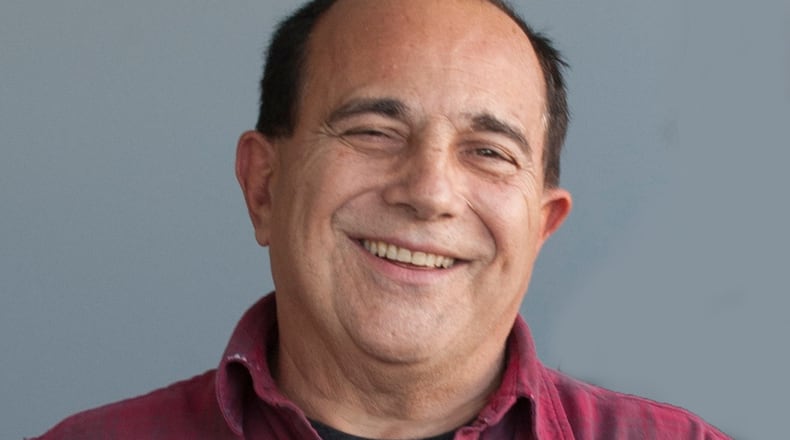I think in the old days, new grease plugs and a lube job would have taken care of this. Is there a way to quiet things down short of replacing ball joints? — William
RAY: William, we love having customers like you at the shop. Guys like you come in, having already diagnosed the problem and tell us you need grease plugs (whatever they are), a lube job and ball joints.
We sell you all that stuff, and when you come back and say the car was still squealing, we can just shrug and say “Hey, you asked for all that stuff.”
I think the squealing is actually coming from your tires, William. But I don’t think you need new tires, either. What you’re hearing is the tires scrubbing or dragging along the smooth, sticky, concrete floor of your parking garage.
Chemically sealed concrete is almost perfectly flat and nonporous. That means 100% of the tire’s contact patch is in touch with the garage floor.
So when you turn the steering wheel, you end up dragging the tires -- in tiny little movements -- over the garage floor.
The tires are intermittently sticking and then sliding a little bit. And that stick-and-slide creates the eeerrr-eeerrr-eeerrr squeaking sound you hear. It’s a lot like what you hear on a basketball court, as players stop and pivot and their sneakers drag along the court surface.
When you’re on a normal road, it doesn’t happen, mostly because the pavement isn’t as smooth. Those chunks of asphalt create a much more porous surface than concrete, so not every square millimeter of your tire’s contact patch is touching the road.
Plus, when you’re driving, there are other noises that would drown it out, like engine noise, wind noise, road noise and your copy of “Led Zeppelin IV.”
What can make the squealing noise worse? If they recently resealed the garage floor. If you have wheels that are out of alignment and more likely to drag or scrub on turns. Or if you’ve been watching too many Charles Bronson movies, William, and are flying into your parking space at 30 mph.
Start-stop issue puts a damper on super Subaru
Dear Car Talk:
I recently purchased a 2020 Subaru Forester. So far, I love this car!
One of its many features is the automatic start and stop system, which shuts off the engine when you stop at a light and restarts it when you take off. When it functions, I notice a small shake as the engine shuts down and another shake when the engine starts back up.
At first, I found this annoying and thought something was wrong. But after speaking with the dealer and numerous friends who drive Subarus, I think the engine just shakes when it starts.
However, the salesperson who sold me the car told me that if one turns on the rear defroster, the shaking will stop. This seems to be true! However, the rear defroster does not stay on all the time, and with each start of the engine, I must remember to turn it on if I want to use it to control the shaking.
My question is: Why does enabling the rear defroster stop the engine from shaking, and why does the car shake when the rear defroster is off? — Alan
RAY: Most cars now have these start-stop systems to save fuel and reduce pollution. And some manufacturers simply do a better job of eliminating that “restarting” vibration than others. On some cars, you don’t even notice it.
Unfortunately, Subaru is at the San Andreas Fault end of the spectrum. It’s among the worst in damping that engine vibration on restart. Why is that? We can’t say for sure. It may have to do with the unique “boxer” engine that Subaru uses in which the pistons are horizontally opposed, creating greater side to side movement and more vibration.
That design has advantages, like a lower center of gravity. But excessive smoothness is not one of those advantages. That never mattered until recently. Not long ago, you’d start your car a few times a day. But with stop-start systems, you’re starting it 50 or 100 times a day. So an engine that shakes on restart is suddenly a real annoyance.
We hope Subaru figures it out soon -- through better damping or whatever -- because it’s an unfortunate demerit on an otherwise very good car.
Why does turning on the rear defroster stop the shaking? Because using the defroster temporarily disables the start-stop system. When there’s a large electrical draw, like the rear window defroster, the car’s computer disables the start-stop system to keep the battery from being drained while you’re stopped with the engine off.
As an alternative, if you dig into your touch-screen menus, you’ll find an option to turn off the start-stop system. It’s not as convenient as pushing a simple rear defroster button (we wish it were, hint hint, Subaru), but it will disable the start-stop system for the remainder of your current trip. By regulation, they can’t let you turn it off permanently, so you have to do that each time you drive. But it’s either that or driving around with a preternaturally warm rear window, Alan. Your choice.
Got a question about cars? Write to Ray in care of King Features, 628 Virginia Drive, Orlando, FL 32803, or email by visiting the Car Talk website at www.cartalk.com.
About the Author
